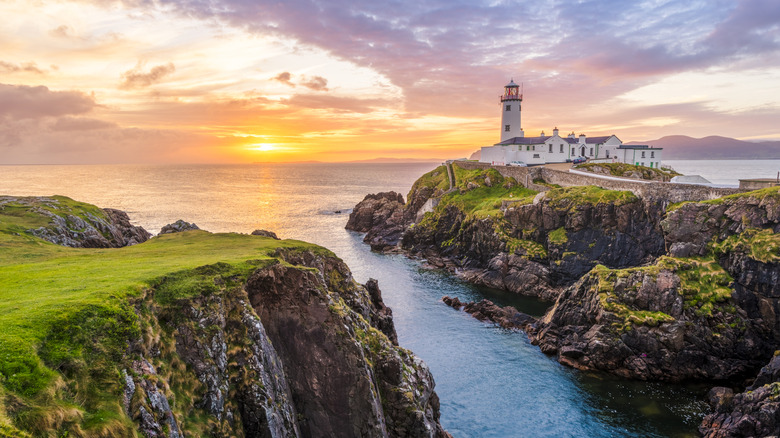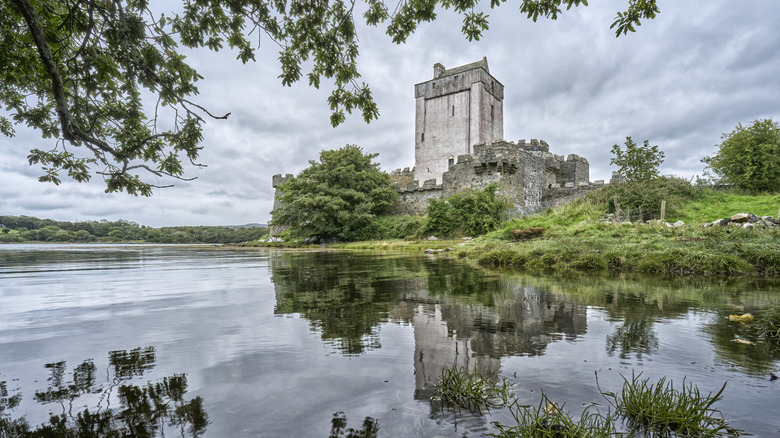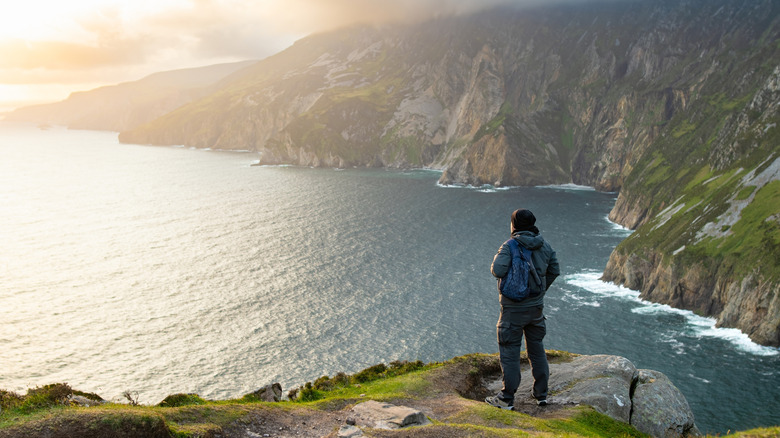Rick Steves Suggests Journeying To This Charming Yet Forgotten County In Northwestern Ireland
Ireland draws millions of yearly visitors thanks to its impressive landscapes, picture-perfect countryside, and vibrant cities. From sipping on a Guinness at one of Dublin's lively and historic pubs to enjoying a cultural festival in Galway, taking in one of Europe's most beautiful destinations while exploring the Cliffs of Moher, and nibbling on at Cork's bustling food markets, the country is filled with equal parts history and character — a winning combination that makes it the perfect destination for solo travelers, families, and on-the-go adventurers alike. However, away from the country's most famous tourist hotspots for sightseeing and entertainment, there's a charming hidden gem that's still largely undiscovered by international tourists: County Donegal.
Tucked away on Ireland's northwestern corner, Donegal boasts the country's longest coastline along the Wild Atlantic Way — with dramatic sea cliffs at Slieve League, pristine beaches, and charming fishing villages all along the way. Better yet, along with its almost-unreal natural beauty, Donegal is also a pillar of authenticity — preserving Ireland's cultural heritage like few other places — with the country's largest Gaeltacht (Irish-speaking region) where traditional music, dance, and folklore continue to thrive.
The region is so special that even travel writer Rick Steves — who's guided Americans through Europe for over 40 years — has highlighted Donegal as a unique destination that's well-worth the visit. Describing the county as "about as far-flung as Ireland gets", and noting that it "wears its isolation well", Steves explains that Donegal's appeal lies in the journey itself — offering more adventurous travelers who are willing to venture off the beaten path a true glimpse into traditional Irish ways, all while surrounded by beautiful scenery.
Exploring Donegal's natural wonders and historic sites
Whether you prefer hiking or relaxing by the sea, you're in luck: Donegal's varied and stunning landscape means you can enjoy a wide variety of activities across its rugged, unspoiled landscape. For outdoor enthusiasts, one of the best places to visit in Donegal is Slieve League. Boasting dramatic views, you can hike along some of Europe's highest sea cliffs — towering nearly 2,000 feet above the Atlantic — and take in the seascape. Alternatively, climbing Mount Errigal (Donegal's highest peak), is also a great way to experience the region's natural beauty. Better yet, after the three-hour hike to the top, you'll be rewarded with spectacular views of Glenveagh National Park, a haven with roughly 40,000 acres of wilderness to explore.
Alternatively, a visit to the county's islands means getting to add a different dimension to your Donegal experience. Specifically, a ferry ride to Arranmore Island (Árainn Mhór) lets you dive into traditional Irish culture and authentic Gaelic tradition. Meanwhile, the smaller Tory Island (Toraigh) — home to its own appointed king — offers a glimpse into a more isolated life. Beach lovers will be happy to hear that Donegal's coastline also features numerous "Blue Flag" beaches like Rossnowlagh, Marble Hill, and Bundoran, perfect for swimming, surfing, or peaceful walks.
Finally, Donegal's five heritage towns — Ardara, Ballyshannon, Moville, Ramelton, and Raphoe — each preserve their unique character. For history buffs, one of the county's can't-miss landmarks is the Grianán of Aileach, a hilltop stone fort dating back to 1700 BC with panoramic views across Lough Swilly. Additionally, the medieval Doe Castle (pictured above), nestled along the shores of Sheephaven Bay, offers a glimpse into the stronghold of the MacSweeney clan dating back to the 1420s.
Essential tips for your Donegal visit
Planning a successful trip to Donegal means putting in a bit of prep work to make the most of this wild and beautiful region. For starters, it's important to consider your timing. While the summer months (June-August) typically mean the most daylight hours and warmer weather, it's also the busiest season. On the other hand, the shoulder seasons (May and September) provide similar weather with fewer tourists and lower accommodation rates. That said, when packing for your trip to Ireland, keep in mind the weather can change very quickly. This means you'll want to bring waterproof clothing, sturdy walking shoes, and multiple layers regardless of when you visit.
In terms of transportation, renting a car is your best option, since public transport is limited throughout the county, and it'll give you the freedom to discover hidden beaches and remote trails at your own pace. From Dublin, plan for at least a 3.5-hour drive; while Belfast is roughly 2 hours from northern Donegal. If flying in, Donegal Airport provides the most direct access, although Dublin and Belfast airports offer more flight options.
Lastly, make sure you remember that Donegal uses the Euro (€). However, once you cross into Northern Ireland, you'll need British Pounds (£). Finally, try to take time to learn a few Irish phrases before visiting Donegal's Gaeltacht regions, where Irish is the primary language. Because, although everyone speaks English, locals will appreciate visitors who make an extra effort with phrases like "Dia dhuit" (hello) or "Go raibh maith agat" (thank you) — a small gesture that can go a long way.


